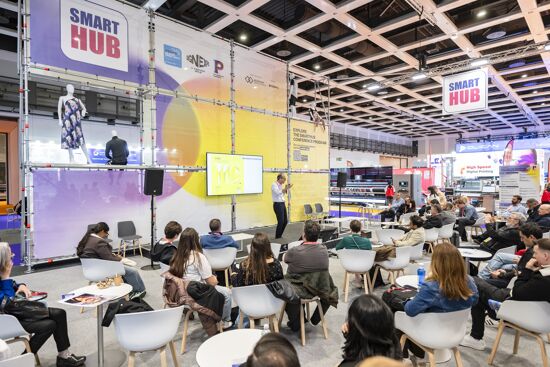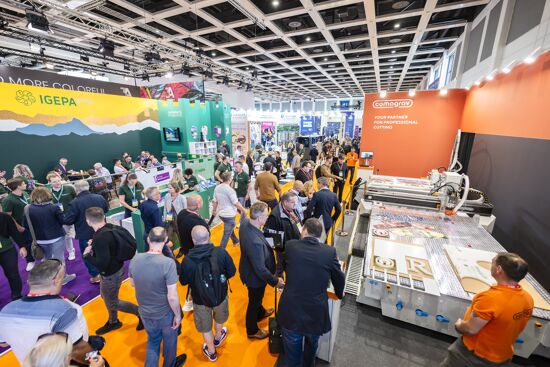Will Nestlé's natural ink innovation revolutionise food and medicine?
Nestec, the R&D arm of food giant Nestlé, has developed an edible ink that could expand the use of inkjet printing in the food and medical industry.
The company has filed for a patent for an inkjet printing process for printing on solid foods with edible inks, with the innovation having already tested on Nestlé’s well-known confectionary Smarties brand.
Nestlé is one of only a few companies in the food industry that already utilises inkjet printing when producing its various products, with many having opted against the method as it often requires the use of undesirable materials such as ethanol and glycerol in order to support water-based inks.
However, speaking to FESPA about the new innovation, a Nestlé spokesperson said that the key factor behind the new process is that it only uses ingredients that consumers are familiar with – thus eliminating any concerns over what is actually in the food they are eating.
“Edible inkjet printing inks are available but these are based on artificial colours.” a Nestlé spokesperson told FESPA. However, at Nestlé, for all new products launched, we strive to avoid artificial colours worldwide – we believe this is a competitive advantage."
The process may be used to apply colours, patterns, images, logos or text to provide information about the nature of the material, for example to identify pharmaceutical tablets; or to decorate the material and make it more attractive, for example to print a cartoon character on a confectionery item, or to print a message on a paper wrapper surrounding a chocolate praline. The process of the invention provides good resolution of the images printed.
Nestle projected a printing resolution from 150 dots per inch (dpi), to 500 dpi. As with printing on any substrate, the maximum resolution for the process of the invention is governed by other factors such as the design of the inkjet head, the ink composition and substrate. Foods used during the experimentation included Smarties, white chocolate and biscuits, while the printer used was a FujiFilm Dinnatix DMP-2831.
Ink compounds were developed with varying percentages of different sugars (fructose, sucrose and glucose) and sweeteners based not on their flavour, but on their behaviour as a pigment carrier. In their research, the pigment used was Annato, an edible organic food additive derived from a tropical shrub.
Speaking about inkjet printing on a wider scale, Nestlé praised the process and what it can potentially do for the food industry as a whole.
“Currently available technologies applied by Nestlé include inkjet printing for Toll House cookies using artificial colours,” Nestlé told FESPA. "Inkjet printing allows us to respond much faster to market demands by providing essentially very little set-up time, thus making just-in-time customisation a reality."
“Inkjet printing results in high quality images and enables rapid image changeover with endless design possibilities.”
Nestec is the food industry's largest research and development organisation, with more than 5000 employees at 34 locations worldwide. Although keen to keep specific details under wraps, the Nestlé confirmed that the company is likely to be using the technology in the very near future.
Topics
Interested in joining our community?
Enquire today about joining your local FESPA Association or FESPA Direct
Recent news

Industry Experts Explore the Evolution of Smart Manufacturing in the Textile Industry
A FESPA SmartHUB roundtable at Personalisation Experience 2025 discussed smart manufacturing's transformative impact on the textile industry. Experts highlighted the shift to on-demand customisation, driven by digital printing, data analytics, and automation. Key takeaways included enhanced machine control, significant waste reduction through intelligent software and colour management, and improved sustainability via energy efficiency and near-shoring, ensuring agility and environmental responsibility in textile production.

FESPA 2025 gathers leading visionaries from across the speciality print industry in Berlin
FESPA Global Print Expo 2025, European Sign Expo and Personalisation Experience (6 – 9 May 2025, Messe Berlin, Germany) welcomed Visionaries from across the speciality print industry to shape the future of print, develop forward-thinking business strategies, and explore innovative ways to translate emerging industry trends into tangible growth opportunities.

Exploring Cutting-Edge Textile Printing Innovation with Adobe Print Engine 7
Adobe PDF Print Engine 7, launched at FESPA Global Print 2025, significantly advances textile printing. Debbie McKeegan shares how it automates non-white substrate management and RGB colour handling, expands colour gamuts with in-RIP multicolour transparency blending, and streamlines workflows for efficiency and sustainability. This update boosts customisation, reduces waste, and positions businesses at the forefront of digital print innovation.

FESPA Global Print Expo 2025 - Overall Highlights
FESPA Global Print Expo, Europe's leading print and signage exhibition returned to Messe Berlin from 6 - 9 May 2025.